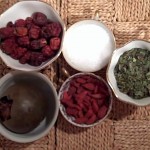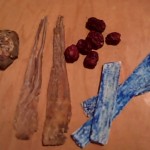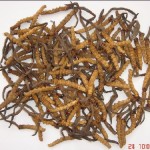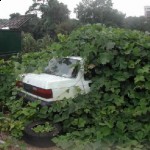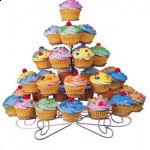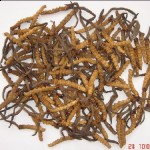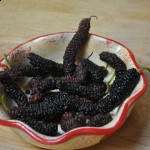 During my weekend farmers market stop I found a surprise hiding between the asparagus and the zucchini. A farmers table was filled with berries. Strawberries, blackberries, raspberries but then in a small inconspicuous container were . . . . . . . . . . . . . . . . . . . .
During my weekend farmers market stop I found a surprise hiding between the asparagus and the zucchini. A farmers table was filled with berries. Strawberries, blackberries, raspberries but then in a small inconspicuous container were . . . . . . . . . . . . . . . . . . . .
Read more:
mulberries. Not quite as appealing and certainly not as popular. Most folks kept asking "what are those"? They looked like a little basket of worms. Ah, but to a self proclaimed herbal medicine witch, a mulberry is much more than just a berry. It's a kidney tonic, prized for it's health benefits. To find these berries in Southern California is highly unusual. Mulberries need a bit colder climate and even then, mulberries are not easy to pick or transport as they don't have a very long shelf life.
I knew I had to have them that instant. At $6.00 a basket, they weren't exactly cheap, but then again the health benefits alone should make them much more expensive. But please don't tell the farmer that. In Chinese medicine, Sang Shen, or mulberries are blood tonifying herbs. They nourish our blood and our kidneys, especially our kidney yin which we deplete with age. This is what gives they a reputation as an effective premature grey hair herbal medicine. Mulberries also have a gently, yet effective laxative quality, as do many berries in any significant quantity. I'm not sure how many other berries grow on a tree like the mulberry, rather than a bush, but I believe it's fairly unusual.
The look on my families faces when I presented my prized possession was a little more like shock, rather than excitement. Their first response, was "What are those?" with an undertone of disgust. When I said "a Chinese herb, I mean berries", they all questioned my sanity and/or my truthfulness. They know whenever I say it's a Chinese herb and it taste good something must be amiss. But they all tasted and were all pleasantly surprised. Fresh mulberries are delicious, I had to stop the gorging just to get a quick picture, the small basket was gone in a flash. They were sweet, juicy and flavorful. I can truly say they might just be my new favorite berry masking as herbal medicine. This coming from someone who believes raspberries are heaven sent. I picked and ate literally thousands of raspberries growing up. Although, I once found wild blackberries on a golf course in Oregon and they were honestly amazing. I had to go back the next day to pick more. Fresh off the vine or tree in this case, definitely makes the difference with berries.

